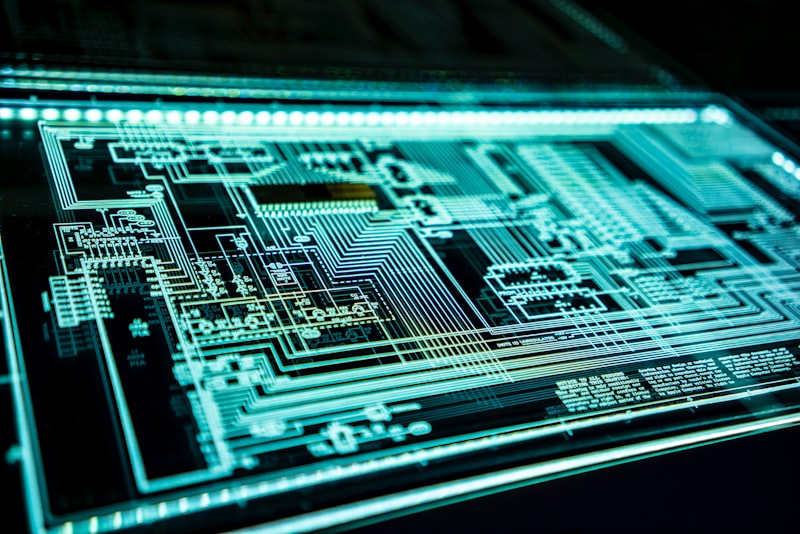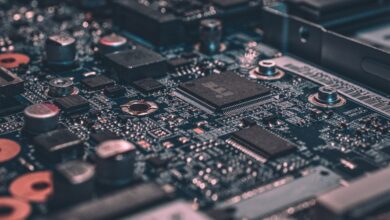What Concepts Does Space Technology Include?

Space technology encompasses a vast array of fascinating concepts that push the boundaries of human knowledge and exploration. Are you ready to embark on a cosmic journey of discovery? Let’s delve into the captivating details of what space technology entails.
At its core, space technology involves the scientific and engineering disciplines dedicated to the exploration and utilization of outer space. It encompasses a myriad of interconnected fields, each contributing to our understanding and harnessing of the cosmos. From spacecraft design and propulsion systems to satellite communication and astrophysics, space technology encompasses a captivating blend of scientific discovery and technological innovation.
One crucial aspect of space technology is spacecraft design and engineering. Skilled aerospace engineers meticulously craft vehicles capable of withstanding the harsh conditions of space travel while ensuring optimal performance. These marvels of engineering are designed to carry astronauts, satellites, and scientific instruments to various celestial bodies, enabling us to study distant planets, moons, stars, and galaxies.
Another key component of space technology is satellite communication. Satellites orbiting Earth facilitate global communications, weather monitoring, navigation, and remote sensing. They act as vital links between continents, enabling instant communication across vast distances. Thanks to space technology, we can make phone calls, access the internet, and gather essential information from all corners of the world.
Space technology also plays a pivotal role in astrophysics, the branch of science dedicated to studying the properties and behavior of celestial objects. Telescopes and observatories, both ground-based and space-based, capture breathtaking images of distant star systems and galaxies, unraveling the mysteries of the universe. By analyzing these observations, scientists gain insights into cosmology, dark matter, black holes, and the origins of the cosmos itself.

Furthermore, space technology encompasses the development of advanced propulsion systems, such as ion thrusters and rocket engines, which power spacecraft during their missions. These cutting-edge technologies enable us to venture deeper into space, explore other planets, and potentially pave the way for future human colonization of celestial bodies.

Space technology is a captivating and multidisciplinary field. It encompasses spacecraft design, satellite communication, astrophysics, and advanced propulsion systems. Through the endeavors of brilliant scientists, engineers, and explorers, space technology allows us to unravel the mysteries of the universe and expand our horizons beyond the confines of our home planet. So, strap in and get ready for an incredible journey through the cosmos!
From Satellites to Spacecraft: Exploring the Expansive Concepts of Space Technology
Have you ever looked up at the night sky and wondered about the vast realm of space? The limitless expanse above us has always been a source of awe and inspiration. Thanks to advancements in space technology, our understanding of the universe continues to expand. In this article, we’ll delve into the captivating world of space technology, from satellites to spacecraft, and unravel the remarkable concepts that drive exploration beyond our planet.
Satellites, those marvels orbiting high above us, play a pivotal role in modern space technology. These man-made objects are designed to orbit around celestial bodies, gathering valuable data and enabling crucial communication networks. From weather forecasting to global positioning systems, satellites have become an integral part of our daily lives. They provide us with real-time information, help monitor climate patterns, and facilitate seamless global connectivity.
Moving forward, let’s soar deeper into the realm of space technology and explore spacecraft. These extraordinary vessels serve as humanity’s means of venturing beyond Earth’s atmosphere. Just like ships sailing through the vast oceans, spacecraft navigate the cosmic seas. They transport astronauts, scientific instruments, and payloads to explore distant planets, moons, and even beyond our solar system. Spacecraft have allowed us to witness breathtaking images of other worlds, uncovering secrets and answering age-old questions about the cosmos.
One of the most remarkable examples of space technology is the Hubble Space Telescope. This groundbreaking observatory, floating gracefully in space, has revolutionized our understanding of the universe. With its exceptional optics, it captures awe-inspiring images of distant galaxies, nebulae, and stars. The Hubble Space Telescope has provided scientists with invaluable insights into the origins of the universe, expanding our knowledge and igniting our curiosity to further explore the mysteries of space.
Space technology has propelled our exploration of the cosmos to unimaginable heights. Satellites and spacecraft have become instrumental in unraveling the enigmas of space and enhancing our understanding of the universe. From satellites beaming signals across the globe to spacecraft voyaging through the cosmic seas, these technological marvels continue to push the boundaries of human achievement. With each new discovery, we inch closer to unlocking the secrets that lie beyond our home planet. So, let us embrace the wonders of space technology and embark on a thrilling journey of discovery, where the possibilities are as infinite as the universe itself.
Unveiling the Marvels of Space Tech: A Comprehensive Look at Its Key Concepts
Space technology has revolutionized our understanding of the universe and opened doors to countless possibilities. In this article, we will delve into the captivating world of space tech, exploring its key concepts that continue to amaze and inspire us.

One of the fundamental concepts in space tech is rocket propulsion. Rockets serve as the backbone of space exploration, propelling spacecraft beyond Earth’s atmosphere. They work on the principle of Newton’s third law of motion – for every action, there is an equal and opposite reaction. By expelling high-velocity gases through a nozzle, rockets generate a powerful thrust that allows them to break free from Earth’s gravitational pull and venture into space.
Another fascinating concept is orbital mechanics. When a spacecraft reaches space, it enters into an orbit around a celestial body like Earth or another planet. Understanding orbital mechanics is crucial for successful space missions. It involves calculating the right trajectory and velocity to achieve a stable orbit, ensuring that the spacecraft can maintain its position without falling back to Earth or drifting away into deep space.
Satellites are a remarkable application of space tech. These artificial objects are launched into space and placed in specific orbits to perform various functions. From weather monitoring to global communication networks, satellites play a vital role in our modern lives. They enable us to observe Earth’s surface, gather data about our climate, and facilitate seamless worldwide communication, all while orbiting high above us.
Space telescopes are another breakthrough in space tech. These powerful instruments capture breathtaking images of distant galaxies, stars, and cosmic phenomena. By observing the universe in different wavelengths, such as visible light, infrared, and X-rays, space telescopes reveal hidden wonders and unravel the mysteries of our vast cosmos. Notable examples include the Hubble Space Telescope and the James Webb Space Telescope, which promise to unveil even more awe-inspiring discoveries.
As we explore the marvels of space tech, it is clear that its impact extends far beyond our planet. From propelling rockets to understanding orbital mechanics and harnessing the power of satellites and space telescopes, these key concepts drive innovation and push the boundaries of human knowledge. They remind us of the extraordinary achievements that await us as we continue to unravel the secrets of the universe.
With each new discovery and technological advancement, we move closer to realizing humanity’s dream of exploring distant worlds and reaching for the stars. The wonders of space tech are an invitation to embark on a journey of exploration and inspire future generations to push the limits of what we can achieve.
Beyond Earth’s Boundaries: Understanding the Profound Concepts within Space Technology
Have you ever looked up at the night sky and wondered about the vastness of space? The mysteries that lie beyond our planet are truly awe-inspiring. In this article, we will delve into the extraordinary world of space technology, exploring the profound concepts that drive innovation beyond Earth’s boundaries.
Space technology encompasses a wide range of scientific disciplines and engineering marvels. One of the key areas of focus is rocketry, which enables us to propel spacecraft beyond the confines of our atmosphere. Rockets, with their powerful engines and precisely calculated trajectories, allow us to reach incredible speeds and escape Earth’s gravitational pull.
But it doesn’t stop there. Once in space, we encounter another fascinating concept: microgravity. Unlike the familiar pull of gravity on Earth, microgravity creates a weightless environment that opens up new possibilities for scientific research and exploration. It allows astronauts to conduct experiments that would be impossible to perform under normal conditions, leading to groundbreaking discoveries in various fields, from biology to physics.
Another remarkable aspect of space technology is satellite systems. Satellites play a crucial role in modern life, facilitating global communication, weather forecasting, and navigation. These artificial celestial bodies orbit the Earth, constantly collecting and transmitting data that shape our understanding of the world. They have revolutionized telecommunications, enabling us to stay connected across vast distances and ensuring that information flows seamlessly around the globe.
Furthermore, space telescopes have transformed our perception of the universe. These sophisticated instruments capture light from distant celestial objects, unveiling the secrets of the cosmos. With telescopes like the Hubble Space Telescope, we have witnessed breathtaking images of distant galaxies, nebulae, and even glimpses of the early universe. Such revelations not only expand our knowledge but also fuel our curiosity about the infinite wonders awaiting discovery.
Space technology offers us a gateway to explore the unknown. From the mind-boggling power of rockets to the weightlessness of microgravity, and from satellites enhancing our daily lives to space telescopes unraveling the mysteries of the universe, the concepts within this field are both fascinating and profound. As we continue to push the boundaries of space exploration, let us marvel at the incredible achievements that human ingenuity has brought forth, expanding our understanding of the vast cosmos that lies beyond Earth.
Revolutionizing Exploration: The Cutting-Edge Concepts Propelling Space Technology Forward

Space exploration has always captivated the human imagination, pushing us to new frontiers and challenging the limits of our understanding. In recent years, there have been remarkable advancements in space technology that are revolutionizing exploration as we know it. From groundbreaking concepts to cutting-edge innovations, these developments are propelling us further into the cosmos than ever before.
One of the most intriguing concepts shaping the future of space exploration is the idea of interstellar travel. Scientists and engineers are tirelessly working on designing spacecraft capable of traveling beyond our solar system. This ambitious endeavor involves developing propulsion systems that can achieve speeds close to the speed of light, enabling us to reach neighboring star systems within a human lifetime. Imagine the possibilities of exploring distant exoplanets and unraveling the mysteries of the universe firsthand.
Another revolutionary concept taking shape is the utilization of artificial intelligence (AI) in space missions. AI-powered rovers and probes are being employed to autonomously explore celestial bodies, such as Mars and the moons of Jupiter and Saturn. These intelligent machines are equipped with sophisticated algorithms and sensors, allowing them to make autonomous decisions and adapt to unforeseen circumstances. By leveraging AI, we can gather vast amounts of data and gain valuable insights about distant worlds, paving the way for future manned missions.

Furthermore, the development of reusable rockets is transforming the economics of space travel. Traditionally, rockets were discarded after each launch, resulting in exorbitant costs. However, visionary companies like SpaceX have pioneered the concept of reusable rockets, significantly reducing the price of accessing space. This breakthrough allows for frequent and affordable launches, opening up new possibilities for commercial space ventures and scientific exploration alike.
The future of space exploration holds immense potential, thanks to groundbreaking concepts and technological advancements. Interstellar travel, AI-powered missions, and reusable rockets are just a few examples of how we are pushing the boundaries of what is possible. As we continue to innovate and explore, we will undoubtedly uncover new wonders and expand our understanding of the vast universe that surrounds us. The journey to the stars has only just begun, and with each new breakthrough, we get closer to unraveling the secrets of the cosmos.




